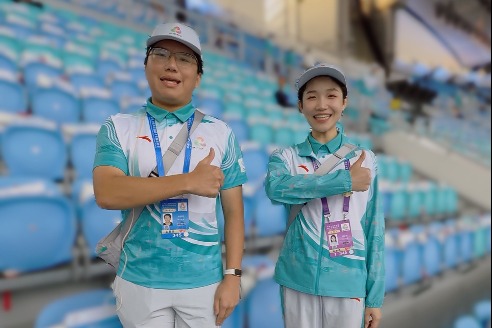Experts give insight into latest guideline on dealing with virus

Editor's note: Health officials and experts responded to key concerns from the public about the ninth and latest COVID-19 disease prevention and control guideline released on June 28 during an interview with Xinhua News Agency on Saturday.

Liu Qing, an official at the National Health Commission's Bureau of Disease Control and Prevention
Q: Why are revisions being made to the guideline?
A: The adjustments are based on the latest pandemic situation, new characteristics of dominant strains and experiences in pilot zones.
The mainland has been hit frequently with domestic flare-ups this year due to the virus' continued rampage overseas, and the highly transmissible and stealthiness of the Omicron variant has added pressure to China's defense. As a result, the State Council's Joint Prevention and Control Mechanism rolled out new measures on a trial basis in seven cities receiving inbound travelers for four weeks in April and May, and drew experiences from local practices to formulate the new document.
The ninth version is an upgrade of existing disease control measures and by no means signifies a relaxation of virus containment. It is now essential to enforce implementation and eliminate unnecessary rules to improve the precision of anti-COVID efforts.
Wang Liping, a researcher at the China Center for Disease Control and Prevention
Q: Why have quarantine times been shortened?
A: Research has shown that the Omicron strain has a short incubation period of two to four days, and most infections can be detected within seven days.
The new guideline states that inbound travelers will undergo seven days of centralized isolation followed by three days of at-home health monitoring, rather than the previous rule of 14 days of centralized quarantine plus seven days of health monitoring at home.
The adjustment will not increase the risk of the virus' spread and reflects the principle of precise virus control.
Q: What is the deciding factor for when to introduce mass nucleic acid testing?
A: The guideline clarifies that when a local outbreak occurs, there is no need to roll out mass testing if epidemiological investigation shows that the source of infections and the chain of transmission are clear and no community spread of the virus has occurred. In such cases, local authorities should focus on testing residents in at-risk areas and the potential contacts of confirmed cases.
However, mass screening is necessary when the transmission chain is unclear and the cluster is at risk of further spreading. The guideline also details rules and strategies for mass testing.
Chang Zhaorui, a researcher at the China CDC
Q: How are high, medium and low-risk areas designated?
A: The status of high, medium and low risk only applies to county-level regions seeing new infections, and the remaining regions only need to implement regular disease control measures, according to the guideline.
Dong Xiaoping, chief virologist at the China CDC
Q: Will the BA.5 subvariant of Omicron undermine the effect of the new guideline?
A: Despite BA.5 becoming the dominant strain globally and triggering locally transmitted outbreaks recently, there are no marked differences between the pathogenicity of the strain and that of other Omicron subvariants.
The new guideline has further highlighted the significance of monitoring for the virus, such as increasing the frequency of testing for high-risk work and adopting antigen tests as an additional tool. These measures are still effective against BA.4 and BA.5 strains.





































